1. Tardigrades: Nature’s Toughest Survivor
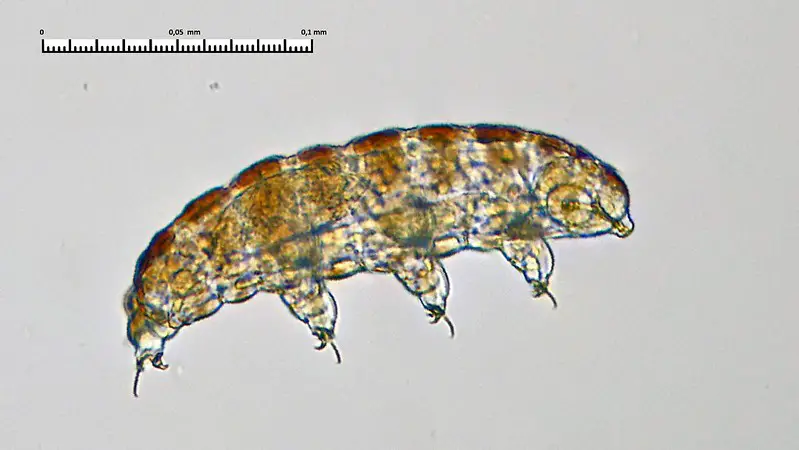
Tardigrades, or “water bears,” are tiny creatures that redefine the meaning of survival. Measuring only 0.02 inches long, they can withstand conditions that would kill almost any other life form. These creatures thrive in boiling hot springs, freezing polar ice, and even the vacuum of space. When faced with extreme conditions, tardigrades enter a state called cryptobiosis, where they lose nearly all water in their bodies, halting their metabolism entirely. In this state, they can survive temperatures as low as -458°F and as high as 300°F, pressures six times greater than those in the Mariana Trench, and radiation levels thousands of times higher than humans can endure. A 2007 study in Nature Communications revealed that tardigrades sent into space for 10 days survived and reproduced afterward, making them the ultimate survivors.
Even more remarkable is their ability to repair damaged DNA after being exposed to radiation or dehydration. Researchers discovered that tardigrades produce a unique protein, Dsup, which shields their DNA from damage, a trait scientists are studying for potential human applications. These microscopic animals have been around for over 500 million years, predating dinosaurs and surviving all five mass extinction events. Found in moss, soil, and deep oceans, tardigrades prove that life’s toughest survivors are sometimes the smallest. Their adaptability is a marvel of evolution, inspiring awe and curiosity about the limits of survival.
2. Emperor Penguins: Antarctic Heroes
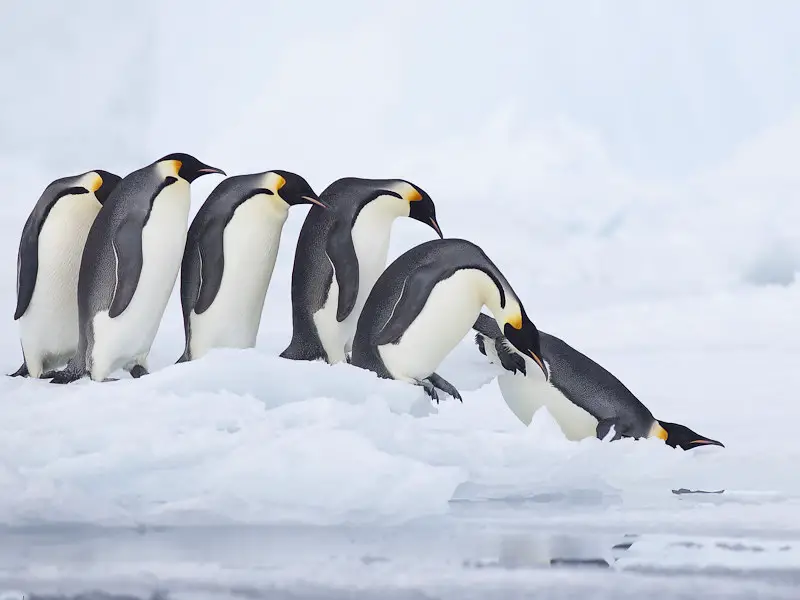
In the brutal Antarctic winter, where temperatures plunge to -76°F, emperor penguins endure one of the harshest environments on Earth. The males take on the critical role of incubating their eggs, balancing them on their feet and covering them with a flap of skin called a brood pouch. During this two-month incubation, the males fast, relying solely on their fat reserves for survival. They form tightly packed huddles, shuffling positions so each penguin gets a turn in the warm center. According to a study by the British Antarctic Survey, these huddles can reduce heat loss by up to 50%, enabling the penguins to survive winds exceeding 100 mph.
Once the chicks hatch, the females return from the sea, bringing back regurgitated fish to feed their young. Remarkably, emperor penguin chicks grow rapidly, developing a thick layer of down feathers that insulates them from the freezing cold. Studies in Antarctic Science highlight that emperor penguins’ survival depends on their social behavior and unique physiology, which allows them to endure months of extreme cold and fasting. This incredible adaptation has earned them the title of “Antarctica’s toughest parents.”
3. Saharan Silver Ants: The Fastest Insects in Heat
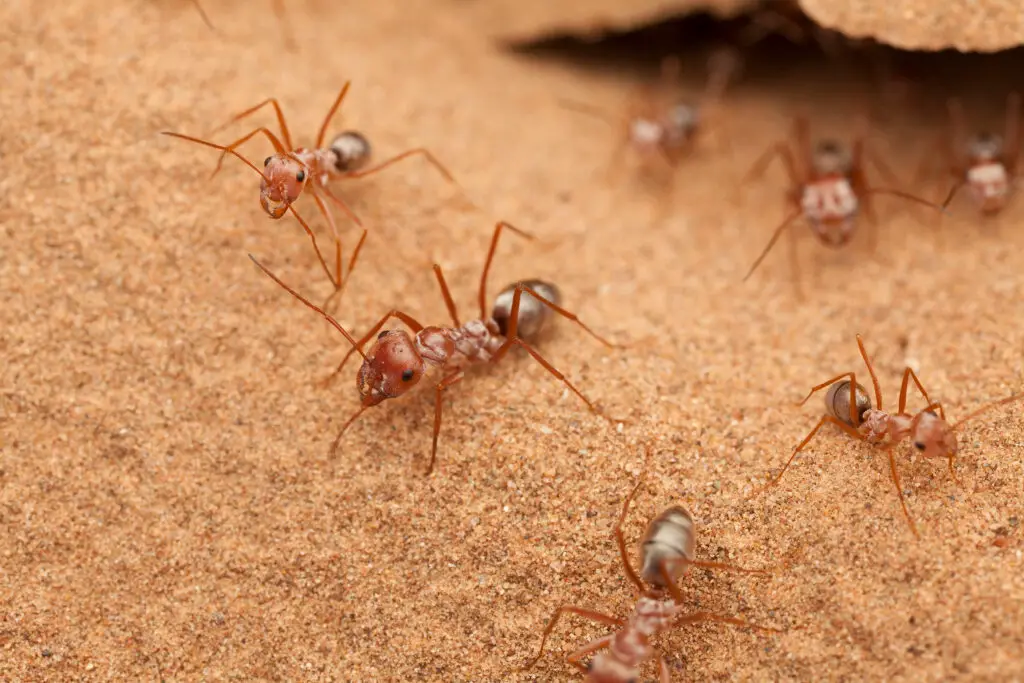
The Saharan silver ant thrives in one of the hottest environments on Earth, where surface temperatures can exceed 140°F. These ants are the fastest land insects, sprinting at a staggering 2.8 feet per second—the equivalent of a human running 400 mph. Their speed is a matter of life and death, as it allows them to forage for food during the hottest part of the day when most predators are hiding from the heat. Their shiny, metallic hairs deflect sunlight, keeping their body temperature below the lethal limit of 128°F, according to research in The Journal of Experimental Biology.
Even their internal biology is heat-resistant. Special enzymes in their bodies remain functional at temperatures that would destroy most proteins, allowing them to move and digest food efficiently in extreme conditions. Saharan silver ants only have a window of 10 minutes per day to scavenge for food before the heat becomes deadly. These ants exemplify nature’s ingenuity, thriving in an environment that most animals wouldn’t dare to enter.
4. Wood Frogs: Frozen but Not Dead

The wood frog survives brutal Arctic winters by doing the unthinkable: freezing solid. During the winter, up to 60% of the water in their bodies turns to ice, and their heart and breathing stop entirely. They produce high levels of glucose in their blood, which acts as a natural antifreeze, protecting their organs and cells from damage caused by freezing. According to The Journal of Experimental Biology, wood frogs can endure temperatures as low as -20°F for weeks at a time.
When spring arrives, these frogs thaw out, their hearts restart, and they hop away as if nothing happened. This incredible adaptation allows them to inhabit regions far colder than most amphibians can tolerate. Scientists are fascinated by the wood frog’s natural cryopreservation abilities, which could have implications for organ transplantation and frostbite treatments in humans. Nature’s version of cryogenics, the wood frog, is a true marvel of survival.
5. Giant Tube Worms: Life in Boiling Waters
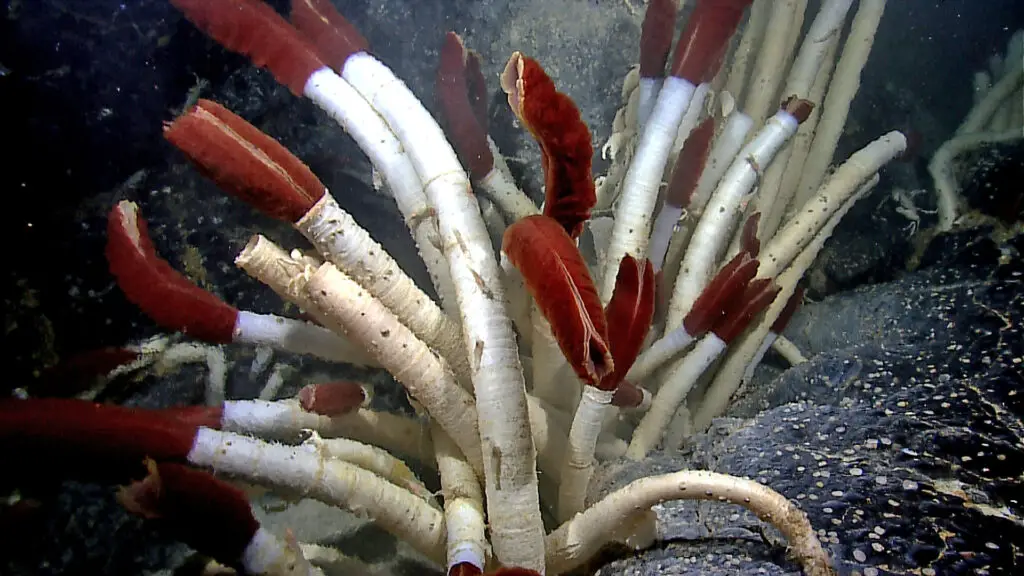
Giant tube worms thrive in one of the harshest environments on Earth: hydrothermal vents on the deep ocean floor. These vents release scalding water exceeding 750°F, laced with toxic chemicals like hydrogen sulfide, which is lethal to most creatures. Tube worms have no mouths or digestive systems and instead depend entirely on symbiotic bacteria housed inside their bodies to convert these harmful chemicals into nutrients. This process, known as chemosynthesis, is the only way life can survive in these dark, nutrient-poor waters. Tube worms can grow up to 8 feet long and form dense colonies around vents, creating mini-ecosystems that support other deep-sea creatures.
Despite the extreme conditions, tube worms have adapted remarkably. The water pressure at these depths is thousands of times greater than at the surface, but their bodies are flexible and resilient. Their bright red plumes contain hemoglobin, which extracts oxygen and sulfur from the water to feed the bacteria inside. According to research from the University of Delaware, without this symbiotic relationship, these worms couldn’t survive in such toxic environments. Giant tube worms demonstrate that even in the most uninhabitable places on Earth, life finds a way.
6. Camels: The Ultimate Desert Animal
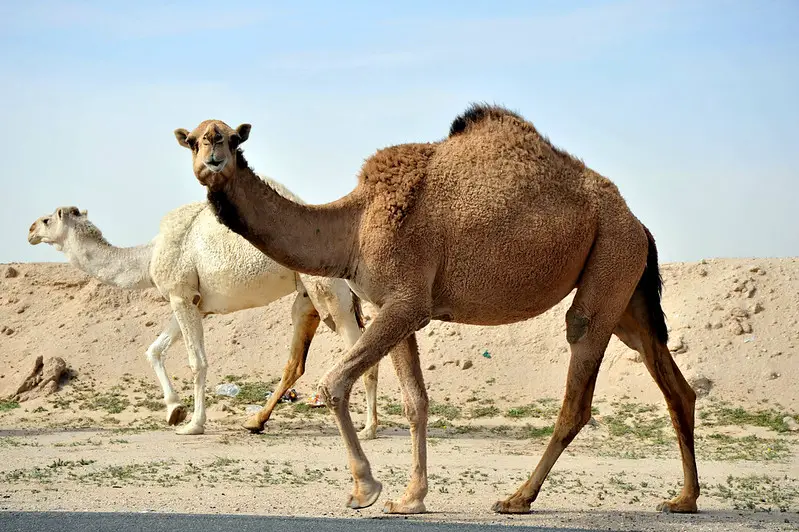
Camels are built to survive the extreme conditions of the desert, where daytime temperatures soar to 120°F and water is scarce. Their iconic humps don’t store water, as many believe, but instead hold fat reserves, which can be metabolized for energy and water when food is unavailable. Camels can drink up to 40 gallons of water in one sitting and lose 25% of their body weight in water without becoming dehydrated—a feat that would kill most animals. According to National Geographic, their oval-shaped red blood cells enable them to circulate blood efficiently, even during dehydration.
Beyond their humps, camels have evolved other extraordinary adaptations to handle desert life. Their thick lips allow them to eat thorny plants, while their long eyelashes and closable nostrils protect them from blowing sand. Their wide, padded feet help them walk on scorching hot sand without sinking. Even their fur, which might seem counterintuitive in hot climates, insulates them against extreme heat. These adaptations make camels the ultimate survivors of arid landscapes, earning them the nickname “ships of the desert.”
7. Polar Bears: Masters of Arctic Survival
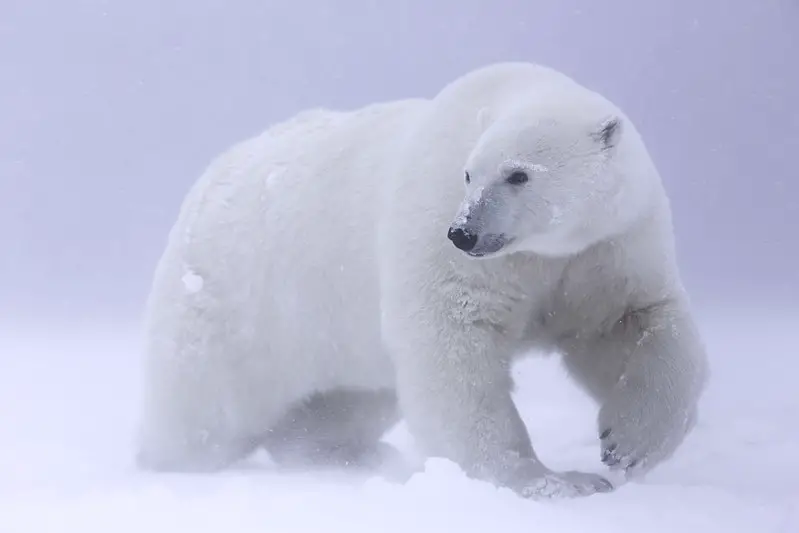
Polar bears dominate the frozen Arctic, thriving in subzero temperatures and icy waters. With layers of blubber up to 4.5 inches thick and dense fur that traps heat, they are perfectly insulated against the cold. Their large, furry paws distribute their weight across the ice, acting like snowshoes to prevent them from breaking through. Polar bears are also exceptional swimmers, traveling up to 60 miles in a single stretch to hunt seals, their primary food source. A WWF study highlights that these long-distance swims are becoming increasingly necessary as climate change melts Arctic sea ice.
The polar bear’s diet is uniquely adapted to its harsh environment. Seal blubber provides the high-fat content they need to maintain their body temperature and energy levels. During lean months, they can enter a fasting state, surviving off fat reserves for weeks. However, shrinking ice habitats pose a serious threat to their survival, as they depend on sea ice for hunting. Despite these challenges, polar bears remain a powerful symbol of resilience in one of Earth’s harshest climates.
8. Alpine Ibex: Defying Gravity in the Mountains
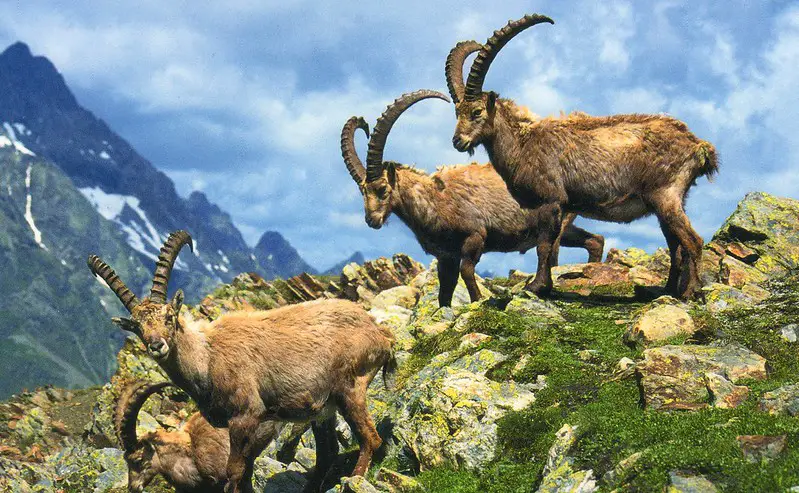
The Alpine ibex thrives in the rugged cliffs of the European Alps, where survival means navigating some of the steepest terrain on Earth. These mountain goats live at altitudes of up to 15,000 feet, where temperatures drop below freezing, and predators like wolves roam the valleys below. Their secret lies in their hooves—each hoof has a hard outer edge for gripping rocky surfaces and a soft, rubbery center for stability. A study in Biology Letters revealed that this hoof design allows ibexes to scale near-vertical walls to find salt deposits and vegetation inaccessible to other animals.
Even in such barren environments, Alpine ibexes manage to thrive. In the winter, they dig through snow to graze on moss and grass, using their horns to clear the way. Their ability to climb cliffs also helps them escape predators, as few animals can follow them into such dangerous terrain. These skills are not just impressive—they are life-saving, ensuring the ibex’s survival in one of the most inhospitable habitats on Earth.
9. Pompeii Worms: Heat-Proof Deep-Sea Creatures
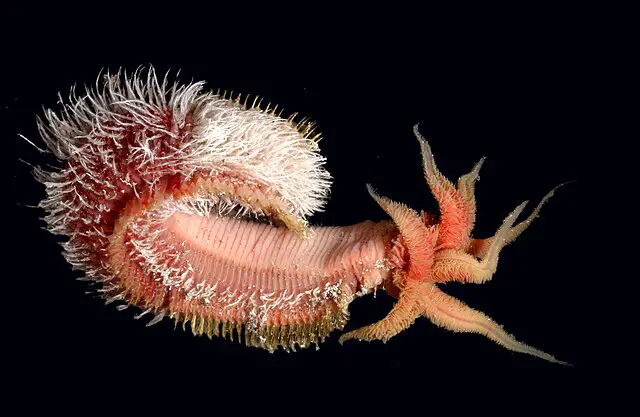
Pompeii worms thrive in an environment most animals wouldn’t survive for a second—hydrothermal vents on the ocean floor, where water temperatures reach 176°F. These worms have a remarkable adaptation: their backs are coated with heat-tolerant bacteria that act as insulation, shielding them from the scalding temperatures. This symbiotic relationship not only protects the worms but also detoxifies the harmful chemicals emitted by the vents. According to a study published in Science Advances, Pompeii worms are among the most heat-tolerant animals ever discovered.
These worms live at the boundary between two extremes—the boiling water of the vents and cooler, oxygen-rich waters. Their tails often remain in the hot vent water while their heads stay in the cooler zones, allowing them to survive in this unique habitat. Pompeii worms grow up to 5 inches long and rely entirely on their bacterial partners for survival. This partnership highlights nature’s ingenuity, proving that life can adapt to even the most hostile environments.
10. Naked Mole Rats: Champions of Oxygen Scarcity
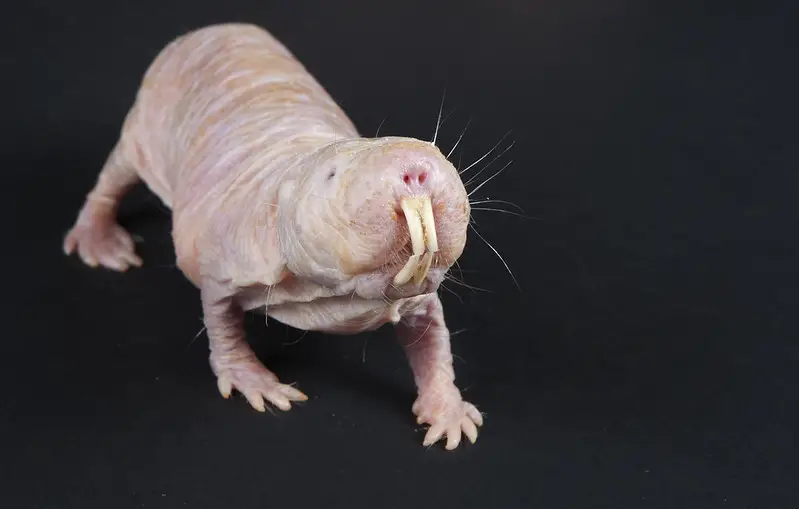
Naked mole rats thrive in the oxygen-deprived tunnels beneath East Africa’s savannas, where most mammals would suffocate. These rodents have a unique ability to survive in oxygen levels as low as 5% by switching from using oxygen to metabolizing fructose—a process more commonly seen in plants. Research published in Science found that naked mole rats can survive up to 18 minutes without oxygen, making them one of the most resilient mammals on Earth.
Their survival also depends on their highly social structure. Naked mole rats live in colonies with a single breeding queen and hundreds of workers, much like ants or bees. Their wrinkled, nearly hairless bodies are well-suited to their subterranean lifestyle, and their low metabolism allows them to conserve energy in food-scarce environments. Scientists are fascinated by their resistance to cancer and their long lifespan, often exceeding 30 years. These unique traits make naked mole rats a true biological wonder.
11. Arctic Terns: Marathon Migrators
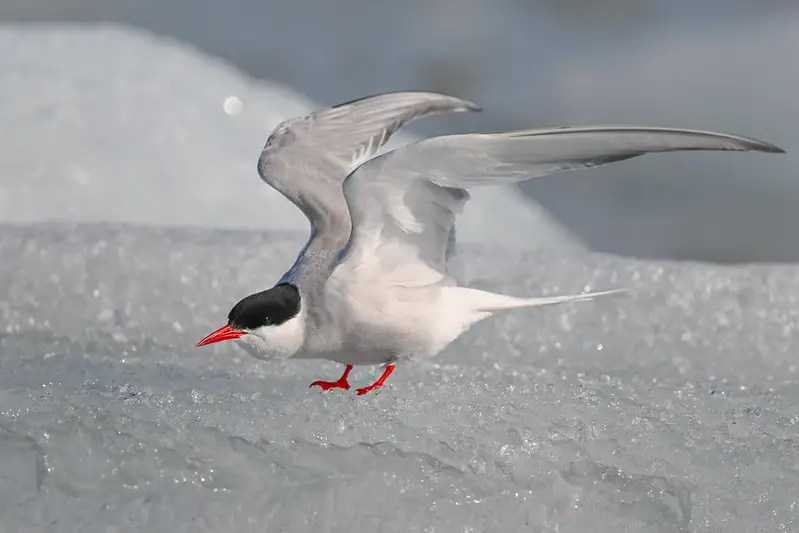
Arctic terns are the ultimate long-distance travelers, migrating up to 44,000 miles every year between the Arctic and Antarctic. These birds follow summer across hemispheres, experiencing more daylight than any other animal on Earth. Their lightweight bodies and streamlined wings allow them to glide effortlessly over oceans, reducing energy use during their epic journeys. A study in Current Biology revealed that Arctic terns can live up to 30 years, meaning some individuals travel more than 1.5 million miles in their lifetimes—equivalent to three trips to the moon and back. This incredible feat makes them champions of endurance.
Navigation is key to their success. Arctic terns rely on the Earth’s magnetic field, the sun, and even star patterns to find their way. They also refuel along their journey, feasting on fish and crustaceans to sustain their energy. Despite the dangers of harsh weather and predators, Arctic terns remain resilient, embodying nature’s ability to adapt and thrive in extreme conditions. Their migrations are not just a survival strategy but one of the most awe-inspiring phenomena in the animal kingdom.
12. Devil’s Hole Pupfish: Fish of the Desert
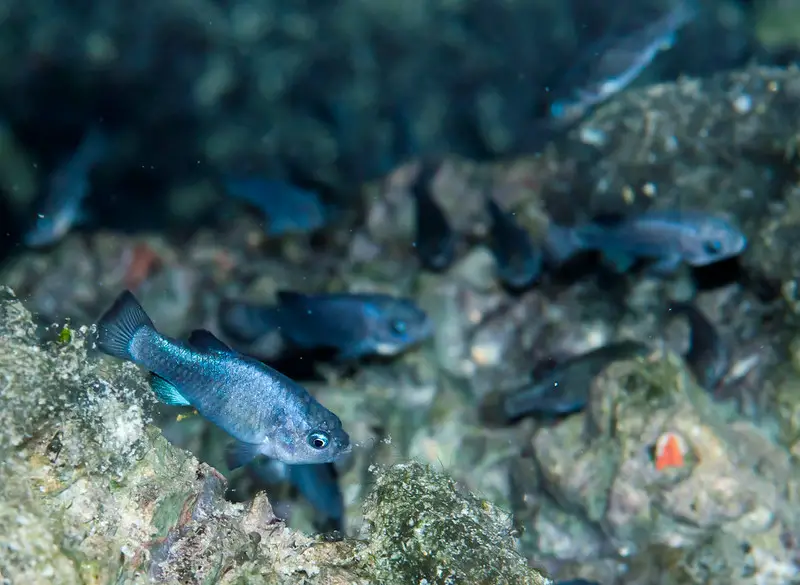
The Devil’s Hole pupfish is one of the rarest and most isolated fish on Earth, surviving in a single desert cavern in Nevada’s Mojave Desert. This species lives in a pool no bigger than a hot tub, where water temperatures reach 93°F, and oxygen levels are critically low. To endure such harsh conditions, the pupfish has developed a slow metabolism, allowing it to thrive on minimal resources. According to the U.S. Fish and Wildlife Service, fewer than 200 individuals often inhabit this unique environment, making them one of the most endangered fish species in the world.
The fish feed on algae that grow in the shallow, sunlit parts of the pool. Seasonal changes in water levels affect their food supply, forcing them to adapt quickly to fluctuating conditions. Despite their tiny size—only about 1 inch long—Devil’s Hole pupfish have survived for over 10,000 years in this extreme habitat. Their resilience in such a small and hostile environment demonstrates how life can persist against all odds, even in the most unlikely places.
13. Saharan Horned Viper: Master of Camouflage
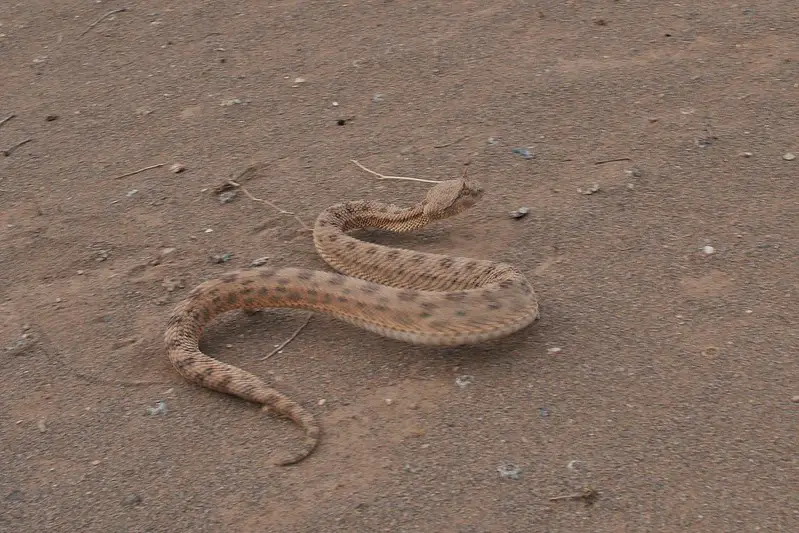
The Saharan horned viper is perfectly adapted to the unforgiving desert, where temperatures can exceed 120°F during the day and plummet at night. This snake’s pale, sand-colored body provides exceptional camouflage, allowing it to blend seamlessly into its surroundings. It buries itself under the sand with only its horn-like scales visible above the surface, waiting patiently to ambush unsuspecting prey. Its unique sidewinding movement minimizes contact with the hot sand, enabling it to travel efficiently without overheating.
The horned viper preys on small rodents and lizards, striking with venom that paralyzes its prey almost instantly. It can go for months without food, thanks to its slow metabolism, and relies on stored energy to survive lean times. According to a study in Herpetology Notes, this snake’s ability to adapt to extreme heat and scarce resources makes it a true desert survivor. Its horn-like protrusions are thought to aid in sand protection and help it hunt in the world’s largest and hottest desert.
14. Ethiopian Wolves: Survivors of the Sky
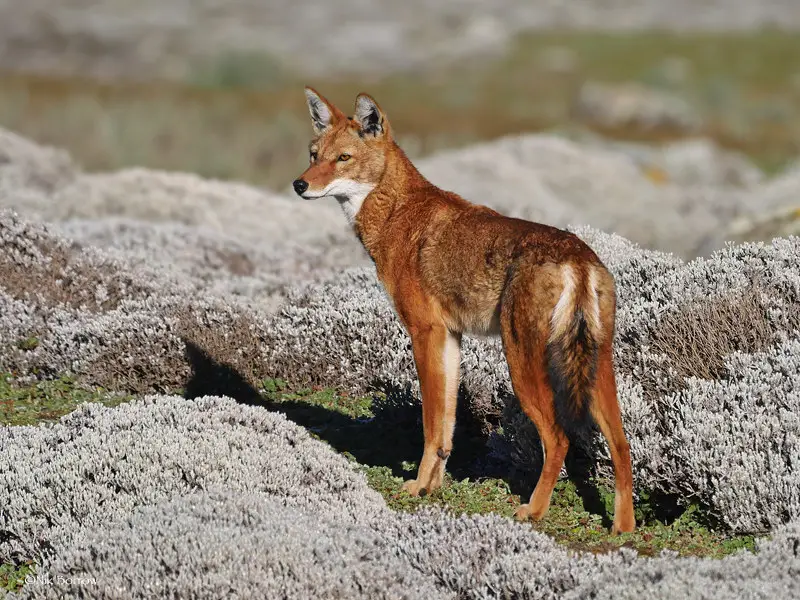
Ethiopian wolves are Africa’s highest-dwelling carnivores, thriving at altitudes above 14,000 feet in the Ethiopian Highlands. These wolves endure frigid temperatures, thin air, and rocky terrain that few other animals could survive. Their long legs and padded paws help them traverse steep, uneven landscapes, while their thick reddish coats insulate them against the bitter cold. They rely on small rodents as their primary food source, hunting alone or in pairs for efficiency. According to the Ethiopian Wolf Conservation Program, fewer than 500 individuals remain in the wild, making them one of the most endangered carnivores on Earth.
Ethiopian wolves live in tight-knit packs, cooperating to defend their territories and rear pups. Their social behavior is critical for survival in this harsh environment, as larger packs can better protect their hunting grounds and young. However, habitat loss and disease from domestic dogs pose significant threats to their fragile population. These wolves are a symbol of resilience and adaptability in one of the most extreme and challenging habitats in Africa.
15. Desert Scorpions: Sand Survivors
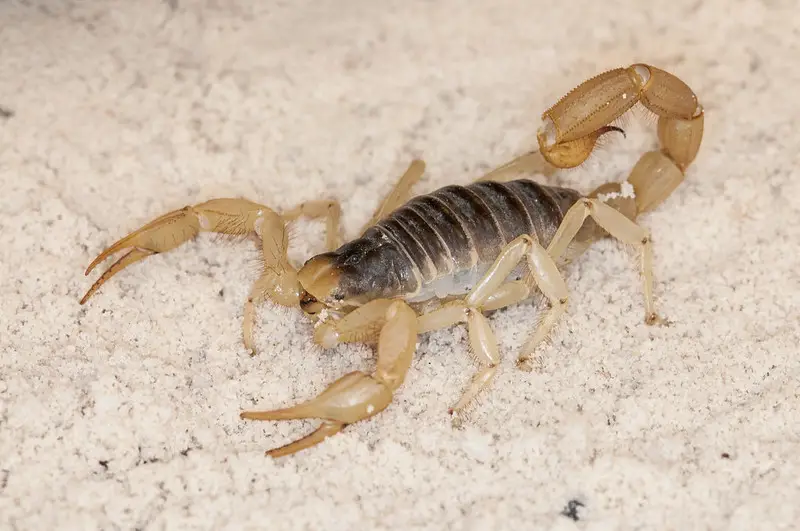
Desert scorpions are masters of survival in some of the planet’s harshest climates, where daytime temperatures exceed 120°F and resources are scarce. They spend most of their lives in burrows, emerging only at night to hunt small insects and arachnids. Their slow metabolism allows them to survive for months on a single meal, and they extract water from their prey to stay hydrated. Their bodies are coated with a waxy substance that minimizes water loss, enabling them to endure arid conditions where dehydration would kill most animals.
When threatened, desert scorpions use their powerful pincers and venomous stingers to defend themselves. Their venom is potent enough to immobilize prey instantly, ensuring a quick meal. Remarkably, these scorpions can survive extreme temperature fluctuations and even prolonged submersion in water. A study published in the Journal of Experimental Biology found that desert scorpions can endure underwater for up to 48 hours, showcasing their incredible resilience. These adaptations make desert scorpions one of the most durable creatures in the animal kingdom.
16. Antarctic Icefish: Blood That Won’t Freeze
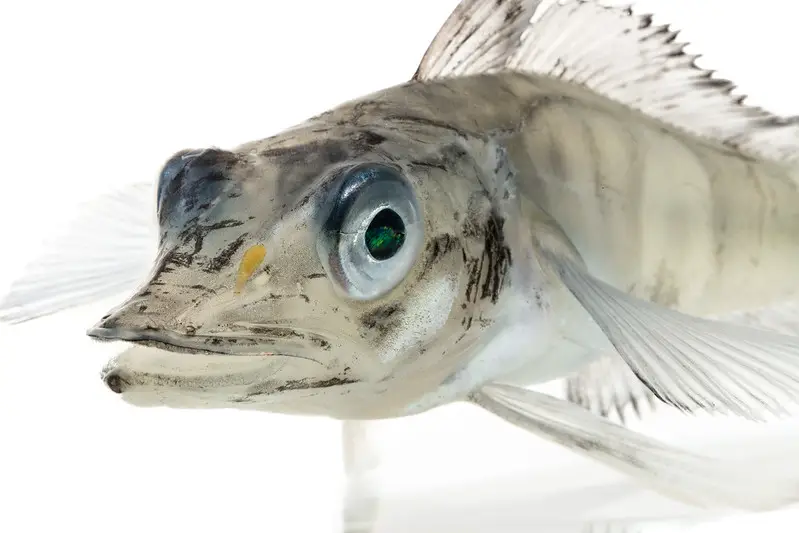
Antarctic icefish have evolved extraordinary traits to survive in the sub-zero waters of the Southern Ocean, where temperatures dip to 28°F, below the freezing point of fresh water. Their blood contains antifreeze glycoproteins, which prevent ice crystals from forming inside their bodies, a trait that sets them apart from most other fish. These glycoproteins act as a life-saving adaptation, allowing the icefish to swim freely in waters filled with floating ice. Additionally, unlike most vertebrates, icefish lack hemoglobin, giving their blood a translucent appearance. They absorb oxygen directly through their skin, a unique feature that compensates for the frigid, oxygen-rich waters of their habitat.
These fish are also remarkably efficient hunters, feeding on krill and smaller fish. The Antarctic icefish’s ability to thrive in these harsh conditions has fascinated scientists, as their adaptations may hold clues for preserving human tissues in freezing environments. According to research published in Integrative and Comparative Biology, icefish are an evolutionary marvel, showing how life can persist in environments where most creatures would perish. Their resilience demonstrates the power of natural selection in some of the coldest waters on Earth.
17. Kangaroo Rats: Living Without Water
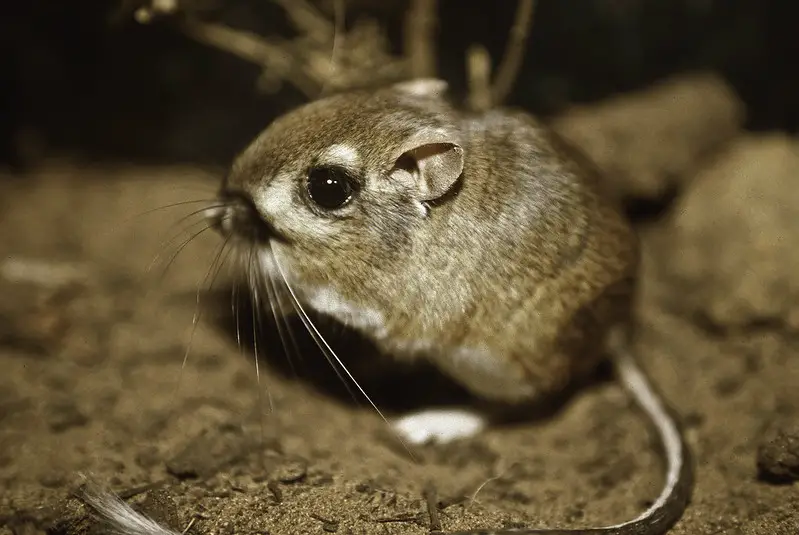
Kangaroo rats are desert survivalists, thriving in some of the driest regions of North America, where rainfall is almost nonexistent. These tiny rodents are so efficient at conserving water that they never need to drink—extracting all the moisture they need from seeds, their primary food source. Their kidneys are highly specialized, producing extremely concentrated urine to minimize water loss. Additionally, kangaroo rats avoid dehydration by staying in their burrows during the heat of the day, emerging at night to forage in cooler temperatures. According to National Geographic, their ability to live without drinking water is unmatched in the animal kingdom.
Beyond water conservation, kangaroo rats are incredible escape artists. They use their powerful hind legs to leap distances of up to 9 feet, helping them evade predators like snakes and owls. Their fur-lined cheek pouches allow them to carry food back to their burrows without dropping it, maximizing their foraging efforts. These adaptations make kangaroo rats one of the most successful inhabitants of arid deserts, proving that even in the harshest environments, life finds a way.
18. Yeti Crabs: Claw-Farming Extremists
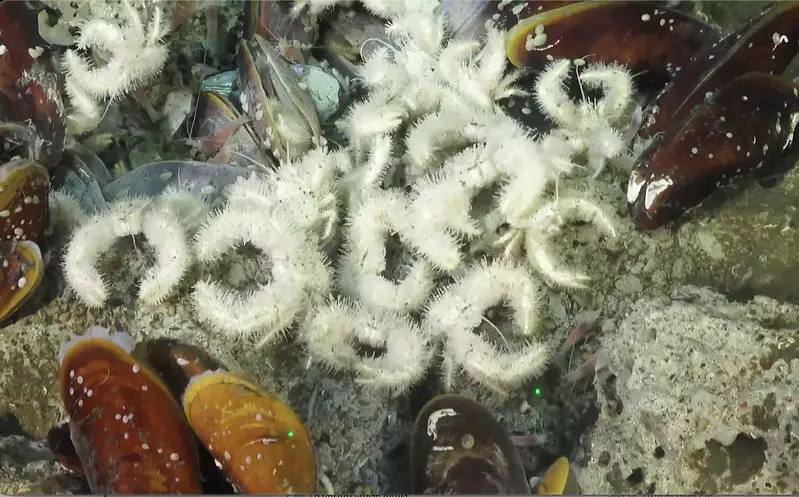
Yeti crabs are deep-sea crustaceans that thrive near hydrothermal vents, where toxic chemicals and extreme temperatures would kill most other creatures. These crabs “farm” bacteria on the hairy bristles covering their claws, creating a reliable food source in one of the most nutrient-scarce habitats on Earth. The bacteria feed on hydrogen sulfide emitted by the vents, and the crabs periodically “harvest” their crops by scraping and eating the bacteria. This fascinating symbiosis was detailed in a study published in Frontiers in Microbiology, highlighting how yeti crabs survive by essentially growing their own food.
Living in complete darkness, yeti crabs navigate their harsh environment using their highly sensitive claws and antennae. The vents they inhabit can reach temperatures exceeding 750°F, yet the crabs manage to position themselves in cooler zones while still accessing the bacteria-rich waters. Their unique survival strategy showcases the incredible adaptability of life in Earth’s most extreme environments.
19. Flamingos: Lake Survivors With Style
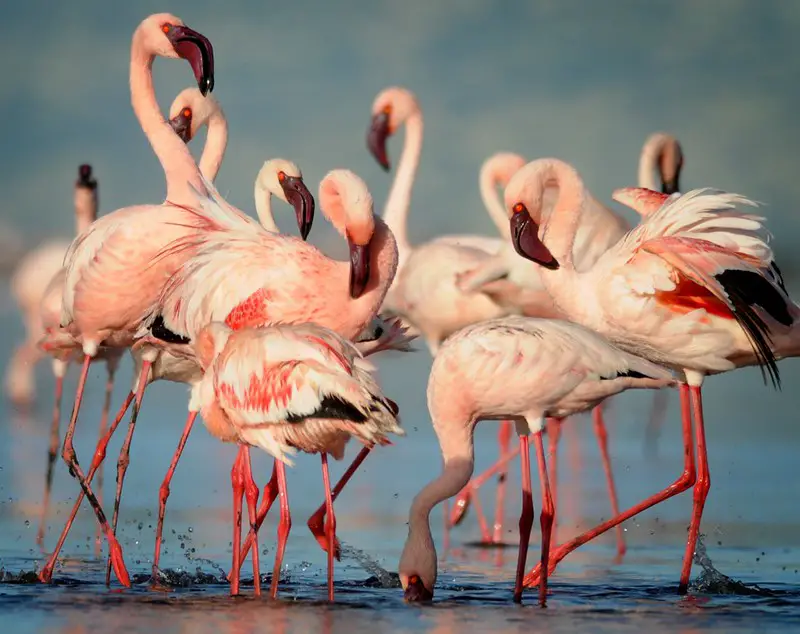
Flamingos are among the few animals that can survive in the caustic soda lakes of East Africa, where water is so alkaline it can burn human skin. These lakes, such as Lake Natron, have a pH level of nearly 10.5 and are saturated with salt and minerals. Flamingos feed on cyanobacteria and brine shrimp, which thrive in the harsh, alkaline waters. Their specialized beaks filter food from the water while keeping harmful particles out, allowing them to feast where few animals dare. According to research published in Scientific Reports, flamingos’ tough skin and scaly legs protect them from the caustic effects of the water.
Beyond their physical adaptations, flamingos’ nesting behavior is equally remarkable. They build mud nests along the edges of these hostile lakes, raising their chicks in an environment nearly devoid of predators. Their vibrant pink coloring comes from carotenoids in their food, a sign of their success in this extreme habitat. Flamingos are a vivid example of life thriving in places most creatures cannot tolerate.
20. Yellow-Rumped Leaf-Eared Mouse: Life at 22,000 Feet
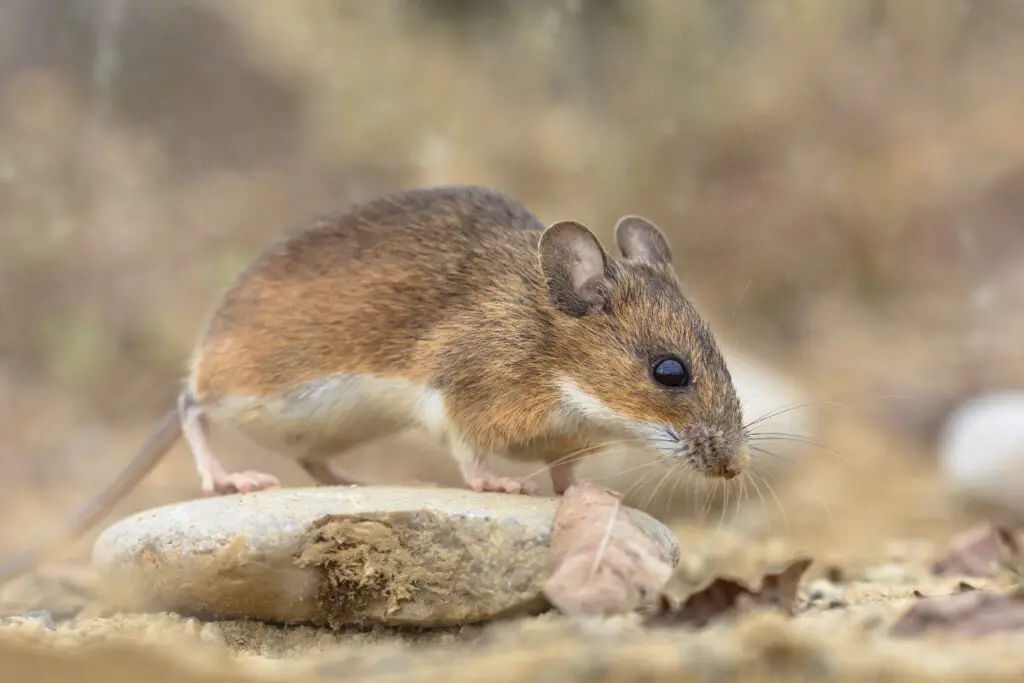
This tiny mouse, weighing just 1-2 ounces, thrives in one of the harshest environments on Earth: the summits of the Andes Mountains. Found at 22,100 feet, it lives where oxygen levels are only about 40% of what they are at sea level, and temperatures plummet far below freezing. Researchers discovered this mouse in 2020 on Volcán Llullaillaco, making it the highest-altitude mammal ever recorded (Proceedings of the National Academy of Sciences). Its ability to survive at such heights is nothing short of astonishing.
The mouse’s extreme adaptations are still being studied, but it’s believed to have developed physiological traits to maximize oxygen use, including increased red blood cell counts and unique hemoglobin. It feeds on seeds, insects, and other tiny food sources found in the barren highlands. Its resilience has scientists fascinated, as it redefines what mammals are capable of enduring. The yellow-rumped leaf-eared mouse is a true high-altitude champion, proving that even the smallest creatures can thrive in Earth’s most extreme environments.
21. Olm: The Eternal Cave Dweller
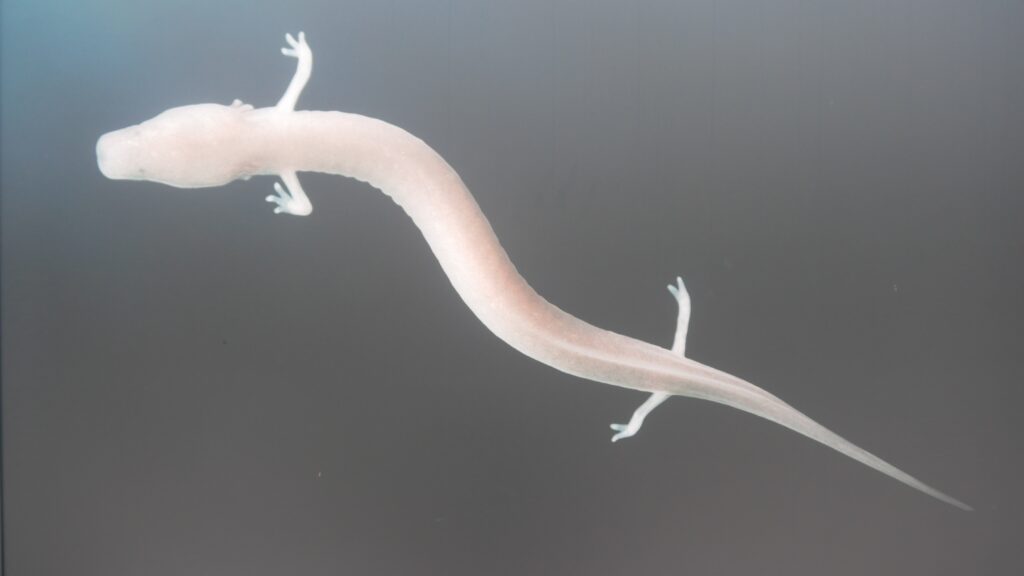
The Olm, also known as the “human fish” for its pale, almost translucent skin, is a unique amphibian found in the underwater caves of Central and Southeastern Europe. Completely blind, it relies on heightened senses of smell and hearing to navigate its pitch-black, oxygen-poor habitat. Living its entire life underwater, the Olm can survive for up to 10 years without eating, thanks to an incredibly slow metabolism and fat storage. These adaptations make it one of the most extreme survivors in the animal kingdom.
The Olm can live up to 100 years, an extraordinary lifespan for an amphibian, and its diet typically consists of tiny crustaceans and worms. Scientists believe its ability to withstand starvation comes from its efficient use of energy and a tolerance for prolonged inactivity. Its isolation in caves has also given it unique traits, such as external gills and the ability to detect electric fields. With its eerie, otherworldly appearance, the Olm is a symbol of life’s ability to adapt to even the darkest and harshest environments. Source
22. Greenland Shark: The Ocean’s Ancient Mariner
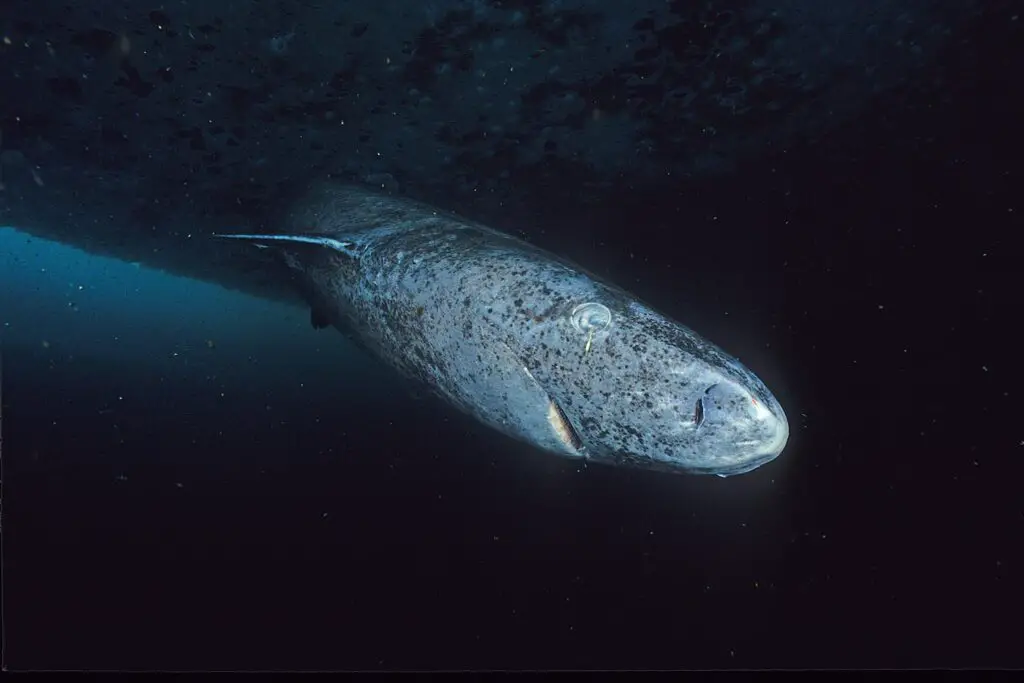
The Greenland shark is a living legend of the icy Arctic, thriving in waters as cold as 29°F and at depths exceeding 7,200 feet. Known for their astonishing longevity, these sharks are the longest-living vertebrates on Earth, with a lifespan of up to 500 years, according to a study published in Science. Their secret lies in their slow metabolism, which allows them to conserve energy and survive in the frigid, food-scarce waters of the Arctic Ocean. Growing at an average rate of just 0.4 inches per year, some Greenland sharks alive today were born before the Industrial Revolution.
Despite their sluggish movement—earning them the nickname “sleeper sharks”—Greenland sharks are formidable predators. They feed on fish, seals, and even carrion, with some reports of scavenging polar bear remains. Their large eyes are often infested with parasitic copepods, which may hinder their vision but have little impact on their survival. Scientists believe these ancient creatures hold clues about aging and longevity, sparking research into how they’ve evolved to withstand centuries of Arctic extremes. The Greenland shark is not just a survivor—it’s a reminder of the mysteries still lurking in the depths of our oceans. Source


